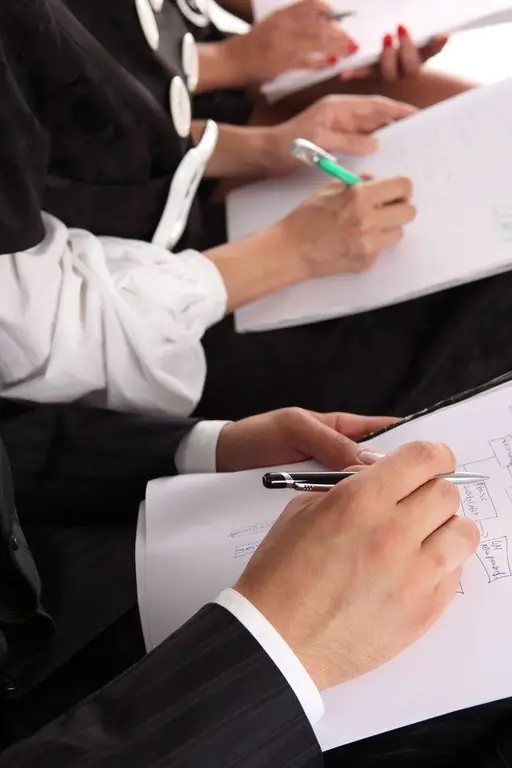The meeting is a traditional attribute of any management process. The significance, nature, technical level, duration of this business meeting may vary depending on the specific goals and conditions of the meeting. At the same time, this event has two main distinctive features: at the meeting one or another problem or task is discussed, and the result should be a certain decision. A successful meeting requires a clear organization.

Instructions
Step 1
Before calling a meeting and inviting a specific group of participants to it, formulate the purpose of the meeting. Clarify for yourself: what decision it should end with. The result may be the approval of a work plan for a certain period, the development of a draft of an actual order, drawing up a network schedule, etc.
Step 2
If a problem is solved at a meeting, the purpose of a business meeting will require answering the questions: why, why, and how. There is an immutable rule: before agreeing, you must agree on what will be discussed. It may be that authoritative meeting participants find themselves thinking that the declared problem does not exist. Special meetings - for generating (developing) ideas. They can take the form of the so-called "brainstorming". The setting for such a procedure needs a non-standard, creative one.
Step 3
An important stage in the preparation of the meeting is the formulation of the agenda. A meeting can be useless and unproductive if its informational and problematic components do not work. Therefore, clearly think over the setting of the topic of conversation. Compare: "The question of increasing sales of product A in the retail network" and "Agreeing on actions to increase sales of product A in the retail network." In the first case, the discussion can turn into banal reports, in the second - into the solution of sore problems.
Step 4
The location of the meeting is also important. There is a correct psychological observation: if the discussion is held in the office of a leader, his view of solving a particular problem may obviously be dominant and more preferable. The best option can be any other room (conference room, spacious room). Remember: the zone of comfortable communication is about a meter away. Whenever possible, keep this in mind when placing your chairs. Round or oval tables are good for meetings. A retreat may be even more appropriate in specific situations, but it is a very costly option.
Step 5
Plan your meeting time thoughtfully. It is irrational to appoint it before lunch break or at the end of the working day. Morning hours are preferable. If you are planning a long meeting, take breaks or coffee breaks (5-10 minutes every hour). If you need to hold an informational meeting, an option is possible without a classic meeting, i.e. without chairs.
Step 6
Disciplines employees of the organization and becomes part of the corporate culture a clear schedule of meetings: it is recommended to hold them on a regular day of the week and at a certain time (for example, on Friday morning).
Step 7
Serious meetings often require visualization: demonstration of tables, diagrams, and video materials. It is desirable to have a whiteboard, flip chart, screen for these needs.






